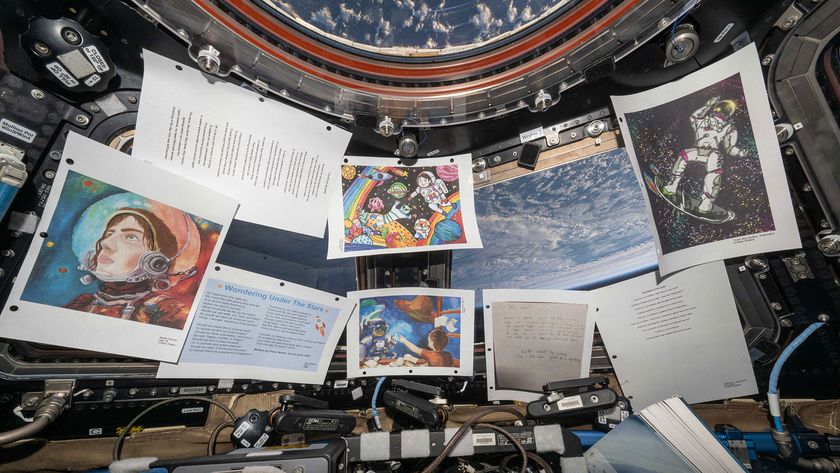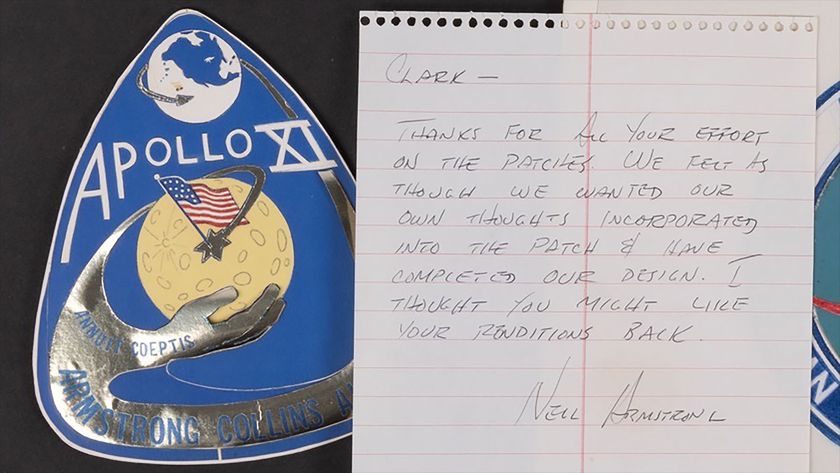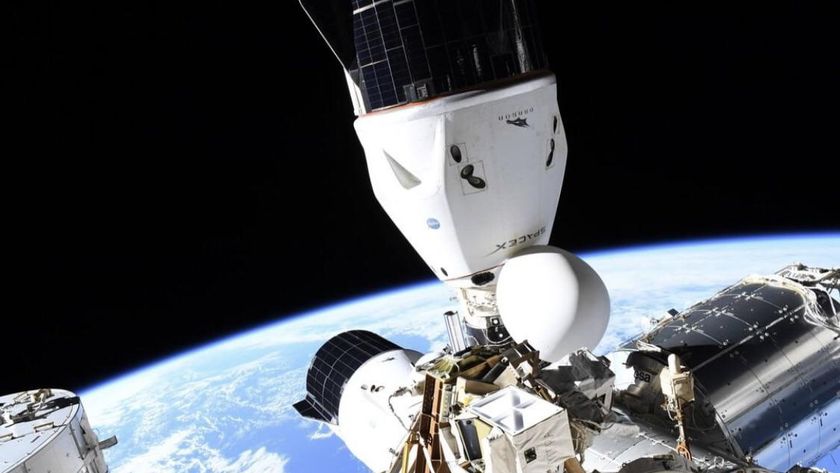One-Year Crew Begins Epic Trip on International Space Station
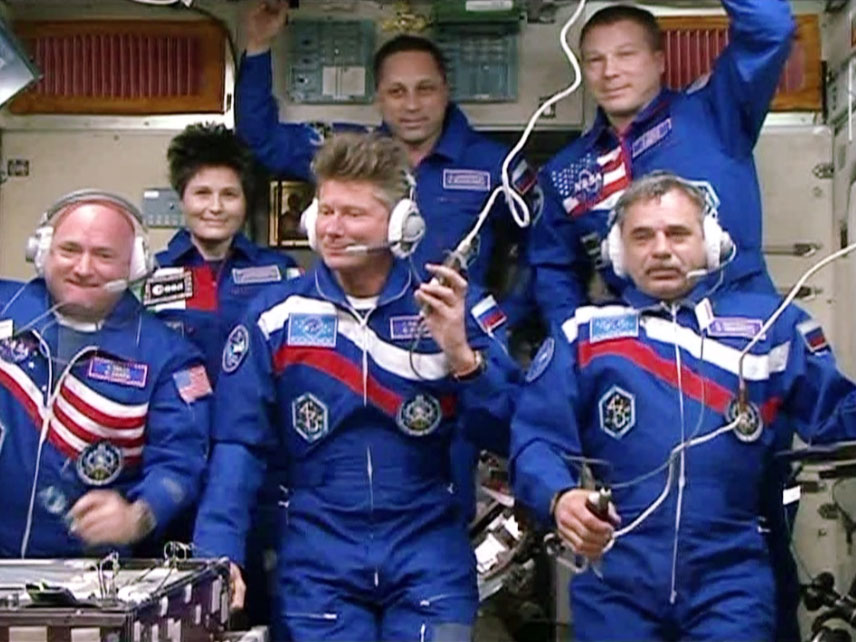
Three new crewmembers just arrived at the International Space Station, and two of them won't be leaving for about one year.
NASA astronaut Scott Kelly and cosmonaut Mikhail Kornienko are expected to spend about 342 days living and working on the International Space Station — marking the orbiting outpost's first yearlong space mission. Cosmonaut Gennady Padalka also joined Kornienko and Kelly on the Russian Soyuz spacecraft that docked with the space station at 8:33 p.m. EDT (0033 GMT). Padalka will stay on the space station for about six months, the usual amount of time people live on the space laboratory.
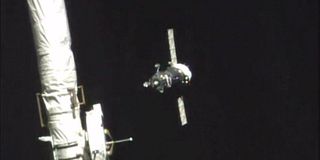
The Soyuz spacecraft launched from Kazakhstan's Baikonur Cosmodrome in central Asia at 3:42 p.m. EDT (1942 GMT) today (March 27). The hatches between the docked Soyuz and space station opened at 11:33 p.m. EDT (0333 March 28 GMT), allowing the three crewmembers to float into their new home. [The One-Year Space Mission: Full Coverage]
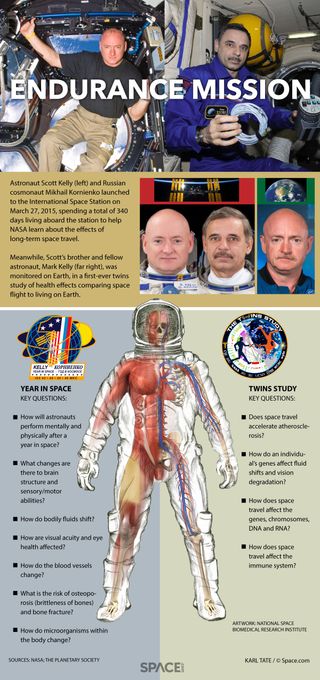
For Kelly and Kornienko, the arrival at the space station marks the beginning of an unprecedented endurance space mission by NASA and Russia's Federal Space Agency. During a live video connection with Russia's mission control center near Moscow, the two men said they were excited now that their journey was underway.
"We're going to be up here for a long time, but I couldn't be doing it with a better guy," Kelly said.
NASA's Terry Virts, European Space Agency astronaut Samantha Cristoforetti, and Russia's Anton Shkaplerov are already living onboard the space station. The three crewmembers had the chance to see the Soyuz launch live from space.
"Soyuz 42S launch as seen from @Space_Station," Virts wrote in a post on Twitter just after launch. "It's quieter than in person, but a very cool view!"
Get the Space.com Newsletter
Breaking space news, the latest updates on rocket launches, skywatching events and more!
NASA officials hope that the one-year space station mission will help scientists gather data about what long-duration spaceflight does to the human body. While some Soviet-era cosmonauts lived onboard the space station Mir for a year or more in the 1980s and 1990s, researchers don't have a lot of data about how astronauts and cosmonauts are affected by long stints in microgravity. Kelly and Kornienko's spaceflight will hopefully change that.
This kind of research is important because NASA officials hope to one-day launch crewed missions to Mars. It will take at least 500 days for a Mars mission, so more research into the potential safety and health hazards of a long-duration spaceflight is necessary before a Mars mission can launch, according to the space agency.
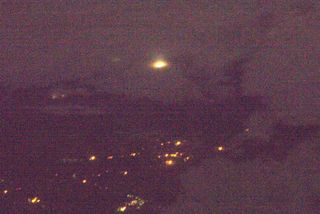
Kelly's twin brother and former astronaut Mark Kelly will also participate in experiments on Earth to help researchers studying his brother in space. The identical twins will be monitored in a variety of ways throughout the mission and after Scott comes home to help scientists understand how the long-term mission might alter Scott by comparison to his brother.
"This mission will push the limits of what Americans can do in space," Mark Kelly said in a statement. "I hope it will advance our understanding of what happens when people leave the planet for a long time and help pave the way for sending Americans beyond low-earth orbit. There are a lot of exciting destinations in the universe, some not too far away. This mission is another step toward them."
Follow Miriam Kramer @mirikramer. Follow us @Spacedotcom, Facebook and Google+. Original article on Space.com.
Join our Space Forums to keep talking space on the latest missions, night sky and more! And if you have a news tip, correction or comment, let us know at: community@space.com.

Miriam Kramer joined Space.com as a Staff Writer in December 2012. Since then, she has floated in weightlessness on a zero-gravity flight, felt the pull of 4-Gs in a trainer aircraft and watched rockets soar into space from Florida and Virginia. She also served as Space.com's lead space entertainment reporter, and enjoys all aspects of space news, astronomy and commercial spaceflight. Miriam has also presented space stories during live interviews with Fox News and other TV and radio outlets. She originally hails from Knoxville, Tennessee where she and her family would take trips to dark spots on the outskirts of town to watch meteor showers every year. She loves to travel and one day hopes to see the northern lights in person. Miriam is currently a space reporter with Axios, writing the Axios Space newsletter. You can follow Miriam on Twitter.
